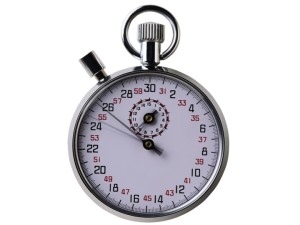 You should get upset when your hospital gloats about great average wait times in the emergency department.
You should get upset when your hospital gloats about great average wait times in the emergency department.
Average means nothing to patients stuck on the right end of the curve, the ones who waited longer than average.
In Scheduling to Meet Patient Needs, we introduced the idea that average harms patients.
This post describes an alternative to ‘average’, and a way to get admitted patients out of your ED, from the book: No More Lethal Waits: 10 Steps to Transform Canada’s Emergency Departments.
Real-Time Data
Average wait times from yesterday will never improve wait times today, right now. Administrators nudge average waits in the right direction with process change, over many days.
But it’s not enough.
If you want to improve waits for patients that sit in your emergency department, you must make process changes on the spot, using real-time data.
In Step 6, Give MDs Responsibility, we discussed letting doctors control patient flow. Docs can adjust every hour to changes in patient volumes and acuity.
Doctors need live data to manage patient flow.
At our hospital, the charge nurse would show the charge physician a printout of all the patients waiting, with wait times in minutes.
Every hour, the charge physician would write his/her action plan, for example, ‘Call next doc in early’, and sign the sheet.
Just asking doctors to ‘Keep and eye on the tracking board’ will not work.
Again, you need live data in minutes; not averages in hours from 10:00 and 2:00 the day before.
No one would approve the average number of life vests, or an average number of parachutes. Emergency services must guarantee resources for the worst case scenario.
Metrics That Don’t Budge
Sometimes, departments perform quite well at baseline. ED teams need a vision, something aspirational, to keep them pushing for excellence, when they have already out-performed their peers.
Find a vision that works for your group. We chose “Treat patients like family.”
But some metrics barely move, no matter what you do.
Many measures, like total length of stay, rely on other departments. For example, you have little control over lab and DI turnaround times, but you can still influence them.
- Stay focused on what you can control, and improve it.
- Then, encourage other departments to post their performance.
- Challenge them to improve as much as your team does.
- Find top results from other hospitals to push them along.
- If you can inspire even one other department, you create an alliance to change others.
Senior hospital leaders need to help drive performance that crosses multiple departments.
Full Capacity Protocol
EDs would be safer without admitted patients filling all the stretchers. Hospitals choose to leave admitted patients in emergency departments. They could choose otherwise. Patients could be moved upstairs.
Dr. Peter Viccellio first described the Full Capacity Protocol. I think of it like this:
Imagine 10 lifeboats. Pretend that each lifeboat can hold 10 people.
Now imagine 9 of the lifeboats filled with 12 passengers, and one filled with 16. One boat is dangerously overloaded.
Which boat should pick up the next drowning passenger? One of the boats with 12 people, or the one with 16?
Hospitals choose to put every new patient into the most overcrowded department in the whole hospital. Emergency departments work at 150% capacity or more, while the inpatient wards complain about working at 105% capacity.
The Full Capacity Protocol works by sending 1-2 admitted patients to each ward, twice each day.
At a certain point of ED overcrowding, say 115%, all new admissions go up to the wards. Ten inpatient wards each take 1 or 2 patients at 10:00 and 14:00.
But hospital leaders choose to ignore the Full Capacity Protocol. They would rather listen to one department whining about overcrowding than fight with 10 departments at the same time.
Who’s in Charge?
Hospitals leaders do not have authority to operate as they think best. They have to please too many stakeholders: unions, physicians, regional health authorities, ministries of health, patient groups, and individual politicians.
Hospital leaders have been handed a governance mush and they deliver mushy results. Boards settle for trying not to stand out, trying not to change things too much.
It takes a very special group of Hospital leaders to make meaningful change to patient flow in our current system.
This gives you a taste of Step 7 from No More Lethal Waits: 10 Steps to Transform Canada’s Emergency Departments. Check out the book for more. Thank you!


